I’ve been needing to write a post for many months sharing some of our family’s lessons learned and where we are on our collective “college journey” with three kids heading to university respectively in the classes of 2020 (Alex), 2022 (Sarah) and 2026 (Rachel). Part of me has been waiting until we “arrive” at a milestone where we seem to have successfully figured some things out… but I’m realizing that elusive day may never arrive until we’re done… and there is so much to both share and process along the way during this adventure. So this post is my first of several I expect to write over the next ten years where I’ll attempt to share some of our lessons learned.
Please don’t mistake this for a “read how we’ve figured everything out in the college journey and you should just follow our example” post. This is far from it. In many ways I feel like such a beginner and like there are so many big things (especially financial) which we should have done differently in our lives so we were in a different position today than we are. Perhaps there are some nuggets here that can benefit you whether you are a parent, grandparent, or Godparent of an aspiring college student. College can be an extremely positive and transformational time of growth and discovery. College can also, unfortunately, be a train wreck of mis-handled freedoms and financial commitments which lead to excruciating debt burdens which could feel like lifelong monetary enslavement. On this I do not exaggerate. My wife and I have friends and acquaintances who have experienced both of these things with children and family members.
Wisely navigating the waters of enticing college choices amidst the landmines of debt and personal freedom is one of the biggest challenges families collectively face together in life. If you find this post helpful or have ideas/suggestions/experiences to share, please add them to this post as a comment or reach out to me on Twitter @wfryer.
Here’s my best attempt today at lessons learned for families on the college journey.
Save Lots and Save Early
You likely have heard this your entire life as I have, but maybe haven’t adhered to it very well for a variety of reasons. The sage advice is: Save lots of money and save early. The earlier you save and invest wisely, the less you will have to save and invest later. Make the “time value of money” (thank you @khanacademy) work in your favor. You need to have a lot of money to make money actually work for you. Create a balanced portfolio of investments, working with a trusted financial advisor who does not charge you inordinately large fees. Invest for the long term with your spouse using a strategy you both agree on, and be prepared for market fluctuations which eventually will come. Take advantage of sheltered college savings plans like the 529 (in the United States) to maximize these investments and set them aside specifically for future college expenses. Invite grandparents to participate in 529 savings plans. Make it a habit to regularly save, even a small amount per month, in your children’s college savings accounts.
Do not be deceived to think I have faithfully followed these sage pieces of financial advice just because I can readily articulate them now. I have not. I wish I had saved far more when I was a (relatively speaking) wealthy single lieutenant in the Air Force, without many commitments or responsibilities. I wish I had established a monthly saving routine early in my working life which I’d carried into our marriage. I wish, I wish… but we can’t change the past. Start today to advance confidently in the direction of your dreams. Routine saving habits are important in life and specifically for college preparation.
Manage Expectations Carefully
What do your children or grandchildren expect in terms of family support in college? They may not know because you do not know. College has become massively more expensive for students as well as parents in the past twenty years. This has been enabled and fueled, to a large degree, by increasing amounts of available credit available through banks and US student loan programs. US News and World Report’s July 2015 article, “Chart: See 20 Years of Tuition Growth at National Universities,” includes a sobering graph of these statistics.
Our son, Alexander, applied for admission to five different colleges this year. Four of those are out of state, and all four of those have an annual cost of over $50,000. When he applied to these schools, we did not know what amounts of merit-based scholarships, financial aid, or government-sponsored tuition assistance (via Air Force ROTC) he would be eligible to receive. We certainly did know, and continue to realize, that none of these schools are financially within our family’s ability to afford without substantial outside assistance. When I was awarded an appointment to the US Air Force Academy in 1988, I remember being told the total value of that scholarship was around $100,000 over four years. Alexander was awarded a $100,000 academic scholarship at one of the out-of-state schools where he applied, but that would represent only 43% of the total cost to attend that institution for four years… and that does not include books, monthly spending expenses, or transportation costs during holidays and between semesters. We calculated in one case, even with this $100K scholarship, our family would have to pay over $3200 PER MONTH for tuition, fees, room and board. That’s far beyond our family’s financial means.
We are as parents, even this very weekend, meeting with our kids to help manage and shape college expectations. Both Shelly and I deeply believe in the importance and value of dreaming big dreams, and encouraging our own children as well as the students we teach in school to reach for the stars. Reaching for the stars and affording that trip to the stars as an undergraduate student, however, may not be in alignment. No college admission or financial aid office that I’ve encountered can or will make these kinds of judgement calls for you or your family. Are you willing to go into debt for this college experience? If you’re willing to go into debt, how much debt are you willing to assume? It’s a rabbit hole that can go deeper than I care to fathom, and it’s important to establish both clear boundaries as well as expectations in advance if you can. These are being negotiated and communicated now as I write this.
Last summer when I led an iPad Media Camp in the Kansas City area, I met a teacher and parent of six whose husband is a community college president. They have established very clear expectations for their kids, that they will all go to the local community college for two years and then (assuming they work hard, do well and earn acceptable grades) to a state college for two more years UNLESS they earn a full-ride scholarship to another school either in-state or out-of-state. Because they have six children to send to college, and (like most of us) limited financial means, they had to establish these boundaries and expectations early. There is a lot of financial sense in this advice.
If we are to ever transcend our financially perilous and debt-enticing status quo when it comes to college costs, I think more families are going to have to choose this local community college to state college study track. It is far less sexy and inviting than what’s provided by a private, out-of-state (or even in-state) college, but it can be tremendously more financially responsible to pursue.
Conjoin College Visits with Family Travel
One thing our family has done successfully in the past, and continues to do, is conjoin family travel with college visits. If you want to help someone envision themselves going to school and living at a specific college, nothing can compare to the experience of actually BEING on campus, taking a tour, walking through the classrooms and dorms, and meeting students who are currently studying there.
Alex’s first “serious” college tour was to Northwestern in 2011, when I had an opportunity to present at a TechLearning TechForum in Chicago. Shelly came as well, and even though Alex was “just” in 8th grade, this started his and our formal college search process.
We didn’t know anything about Northwestern before this tour, other than it was a great college in the Chicago area, and it was an eye opener in many respects. It’s a phenomenal institution, but also has a crazy sticker price. We loved the approach they take to undergraduate engineering, getting students into a design and creation lab soon as freshmen working on “real projects” for clients in the local community. It was also exciting to meet Benjamin Slivka on our visit, who is a Northwestern alum and board member that happened to be visiting campus that day. He helped develop Internet Explorer when he was at Microsoft, and encouraged Alex to get in touch with him down the road if he could help in his college admissions process. Alex didn’t end up applying to Northwestern as one of his five schools, but this certainly got all of us thinking about college possibilities as well as the importance of networking and working hard to become an attractive / well prepared applicant out of high school.
Since that visit to Northwestern, Alex has visited Kansas State, Oklahoma State, the University of Oklahoma, Harvard, MIT, Colorado College, The U.S. Air Force Academy, Colorado School of Mines, Olin College, Rensselaer Polytechnic Institute (RPI), the College of Wooster, and Webster University. Each of these visits involved “formal tours” of campus, and in several cases a chance to stay overnight on campus. Last summer Alexander participated in the University of Oklahoma’s “Engineering Days” program on Fridays, which not only provided a closer look at OU but also helped him discern which engineering disciplines are most interesting and intriguing to him.
Our 2012 family trip over fall break to the northeast was primarily focused on visits with friends in Maine and New Hampshire. The chance to visit historic sites in Boston and both Harvard and MIT, however, was a huge highlight.
One of the “deals” I made with our kids on that trip was that I would buy them a tshirt, sweatchirt, or other reasonably priced apparel item with the name and logo of the school we were visiting. From an identity formation standpoint, I know this is a big deal. When you “put on” the colors and logo of a school, as a young person you are projecting out to others your future vision of who you are and who you might become. Michael Wesch helped me realize several years ago that identity is more what is reflected back at us from others around us, rather than what we try to project outwardly to others. That said, however, others react to us and “reflect back to us” based on what we wear as well as what we say and do. So clothes matter. Both Shelly and I want all our kids to know they are smart, capable, and gifted. If wearing the college colors and a college logo can help my children better envision themselves studying and succeeding at an awesome university, I consider those funds to be well invested.
I am so thankful for the opportunities as well as the financial means to travel with our family and visit different colleges in person. I know some students and families wait until their junior or senior year to start doing college visits, and many colleges are oriented to expect mostly juniors and seniors to visit. College visits at that time can be valuable, but I strongly believe that’s too late to start. Ideally, college visits should start early. I’ve had many conversations with parents over the years on airline flights and elsewhere, when they’ve confirmed how early their own children started forming future visions of themselves attending a specific school. Nothing beats visiting a college in person, if you want to plant the seeds of future attendance.
The previous section of the post, “Manage Expectations Carefully,” is tied closely to the lessons learned of this section about travel and in-person visits. As we’ve gone further down the financial decision tree of college costs with Alex, at times we’ve (briefly) felt like failures as parents because we’ve taken our kids to these absolutely amazing schools, and many of them are beyond our financial reach as a family. We didn’t know that when we visited, of course, because there are so many variables which contribute to “college financial viability” including scholarships and financial aid. Upon longer reflection, however, we’ve concluded that none of these trips have involved wasted time or money. Not only have these EXPERIENCES been some we’ve loved and still cherish today, they have also helped our kids establish a VISION of their own ADJACENT POSSIBLE. I’m borrowing language here from Steven Johnson (@stevenbjohnson), when he talks about innovation, creativity, and big ideas. Never underestimate the potential value of an in-person college visit. Our identities and futures are in constant motion, and the experiences we have dreaming big dreams can be critical seeds which will bear fruit many years down the road.
Avoid Mainstream College Mindsets
It’s important to avoid some of the common, mainstream college mindsets which predominate today. One of these is that kids are sometimes (often?) expected to attend the school mom or dad attended. If one of my universities is the best school for one of our kids, that’s great… but I certainly don’t want them to attend just because I did. I also think college sports fanaticism gets taken to ridiculous extremes. We have friends whose families have serious animosity between members who graduated from OU and those who graduated from OSU. Rivalries and competitions can be fun, but they also can lead to destructive attitudes. We should genuinely want our children to not only be successful in college, but also to find their own path where their interests and aptitudes “fit,” and also align with family financial resources.
We also should be wary of the mindset that says every student should go to college, and every student should go to college right away after graduating from high school. Colleges and universities are not only institutions of higher learning today, they are also BUSINESSES. The athletic side of universities, particularly Division I institutions, has been dramatically transformed in the past twenty years by millions of dollars. Our collective love for athletics and the colors of our respective college “tribe” can skew our attitudes and opinions about schools our own children attend or may choose to attend. Additionally, we can fall into the trap of standardized thinking about students… thinking that EVERY child should necessarily do THIS because they’ve reached a certain AGE or grade level. Human beings are not standardized organisms. We are each unique and different. While we want to avoid the trap of low expectations (“That kid isn’t college material”) we also should aspire as both parents and teachers to avoid the trap of standardized thinking when it comes to college admission.
Seek Advice from Worldly Friends
The opportunity to travel can be a great blessing. I definitely have friends who wish they didn’t travel as much for work, and wish they could spend more time with their families. I have college classmates who spent years on deployments to unglamorous corners of our planet, where they missed out on birthdays and soccer games and Friday date nights. In moderation, however, travel to diverse places can be an enriching and invigorating experience. It’s easy to live inside whatever bubble of “normal” we find ourselves and imagine our daily routine is the extent of our own “adjacent possible.” It isn’t, however, for us or for our children. Stepping outside to see new places, experience other cultures, and meet new people reminds us of how large the world is and just how many different ways there are to make your way in this world.
One of my goals for our children is to provide them with educational opportunities which extend beyond those my wife or I have known. We’ve heard it often said, “The apple doesn’t fall far from the tree.” I want my children to have opportunities to study in places and train in professions I never did if it suits them. Toward this end, two years ago I had lunch with Michael Wesch (@mwesch) and Cyndi Danner Kuhn (@cyndidannerkuhn) in Manhattan, Kansas, during an iPad Media Camp. Mike has traveled to a LOT of different colleges and universities in his work as a professor and speaker, so I was really interested in what colleges he’d like to see his own kids attend someday. He was unequivocal with his answer to this question: Wooster College in Ohio.
Later that summer, our family was traveling cross-country to Vermont to Oklahoma, so Shelly and I could participate in the amazing Create, Make and Learn Summer STEM Institute. We were able to slightly alter our route so we could take a family tour of the College of Wooster in Ohio.
https://www.instagram.com/p/qt1ELSugOy/
Fast forward to last weekend, when Alexander and I spent Sunday and Monday at Wooster for an admitted students weekend.
It is not clear at this point whether the financial offer from Wooster will be sufficient to allow Alex to attend there in the fall. We are submitting more paperwork and information, and should know soon. What is clear at this point, however, is that the advice of friends has led us to visit and experience colleges which we would not have otherwise encountered. Wooster is one of a relatively small number of “colleges which change lives.” I cannot imagine a more ideal liberal arts college. Class sizes are generally 8 – 12 students. There are not any graduate students, so the focus of professors is on undergraduates. Although the college awards bachelor of arts degrees as a liberal arts institution, students are able to major in sciences like Chemistry, Bio-Chemistry, and Physics.
Wooster’s tagline is, “America’s Premier College for Mentored Undergraduate Research.” This is one of the reasons Mike Wesch was and is so enthusiastic about Wooster as a college choice for his own kids: Students at Wooster learn how to research and present research as undergraduates. The opportunity to have close working relationships with faculty conducting research is almost unheard of among universities today. Wooster absolutely is a gem among thousands of college choices. And, of course, all gems come with a premium price tag.
Ask people you know or meet, who have traveled widely and visited many colleges, which ones they think are spectacular and particularly outstanding for undergraduate students. Then find a way to take your kids to visit those schools.
Understand Admissions Preferences
Until I took my current position with an independent school, I had not heard of the college search service Naviance. It’s amazing and powerful, not only for finding colleges which offer programs and athletic teams of interest to students, but also for tracking the average GPA and ACT scores of admitted students. This can help applicants determine in advance if it’s realistic to apply and have a reasonable chance of admission.
One of the things I’ve learned in the past year is that for college admissions, several things can move an applicant up the list among peers. If you are a “legacy” student, meaning you have a parent or other relative who is an alum of the college to which you are applying, your application can receive special consideration. Being a recruited athlete can also move applicants into admitted status. Geographic diversity can also be considered for admission at selective schools which are far from your home. Alex’ 6th grade math teacher at Classen SAS had given this counsel to us during a parent-teacher conference six years ago.
Plenty of students have dreams of sports glory in college and beyond in the world of professional athletics. While relatively few students will make it to the professional level of any sport, many more earn and can earn college degrees thanks to athletic scholarships. This isn’t something I had seriously considered for our own children before getting immersed into the college search, application, and financial aid process. I am certainly not in favor of pushing kids to play sports they do not enjoy just because they might earn a college scholarship someday. I don’t think a sports scholarship could come to a student who didn’t enjoy their sport, and who has the internal drive to practice with discipline. The truth is, I don’t know much about high school or collegiate athletics. But here is one thing I do know: Sports can open doors, for female as well as male students. My advice is this: Encourage your children to pursue their interests in sports as well as other extra-curricular activities. We are working to open more doors to sports and athletics for our youngest child, who has expressed continued interest in them. This may be obvious to everyone else, but it wasn’t something I had thought much about in earlier years of parenting.
Apply Early for ROTC
If your children are interested in military service, it’s valuable to consider both service academies as well as ROTC as pathways to commissioning as an officer. Coming from an Air Force family and being an Air Force veteran myself, I’m definitely partial to the Air Force over other military branches. If your children are going to apply for a service academy, that application process should begin in the spring of their junior year of high school. When it comes to ROTC, the application process doesn’t start so soon but our experiences prove it’s also important not to delay too long. Air Force ROTC has four different “boards” which consider candidate applications. Alex applied late enough that his application could only be considered by the third and fourth boards. If we could re-do this year, I would encourage Alex to get his ROTC application in much earlier in the fall so he could have met all four ROTC application review boards.
This was a long post, but it’s also been a long time coming. I’ve learned a lot in the past six years as we’ve been helping Alex search and apply for colleges, and I know our learning journey is far from over.
https://www.instagram.com/p/8uBtd4ugPZ
If you enjoyed this post and found it useful, subscribe to Wes’ free newsletter. Check out Wes’ video tutorial library, “Playing with Media.” Information about more ways to learn with Dr. Wesley Fryer are available on wesfryer.com/after.
On this day..
- Arab Spring and the 2018 Oklahoma Teacher Walkout – 2018
- Oklahoma SDE Providing Funds for 1 Year Common Core Coach Positions – 2012
- Technology Trends in Higher Education (April 2010) – 2010
- WiFi Connectivity Options at Starbucks, AT&T hotspots, and Rural Broadband over Power Lines – 2009
- VLE versus MLE – 2008
- links for 2008-04-09 – 2008
- Choosing forgiveness and grace over hate and revenge – 2007
- Promoting blogosphere civility – 2007
- The landscape of commercial eLearning curriculum options – 2007
- Flash format screencasts – 2007

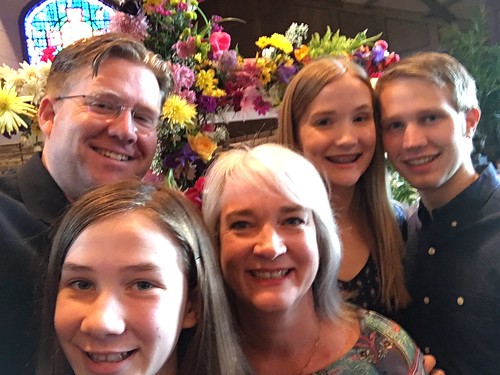



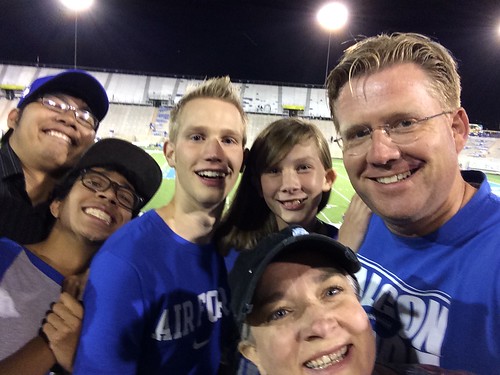

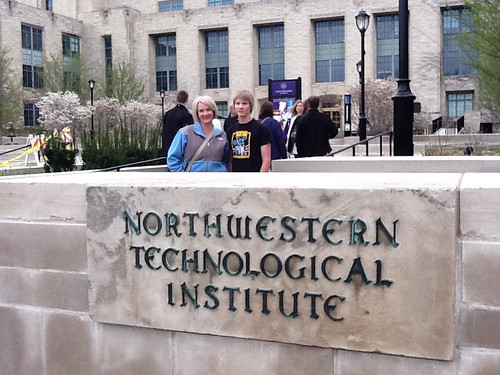

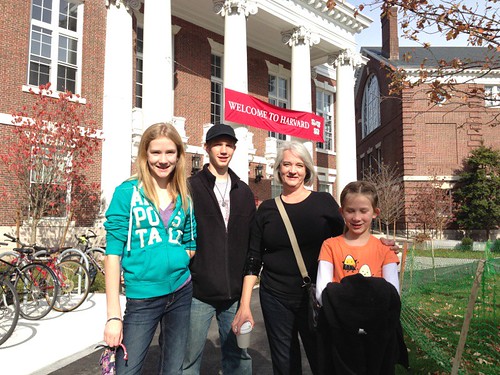


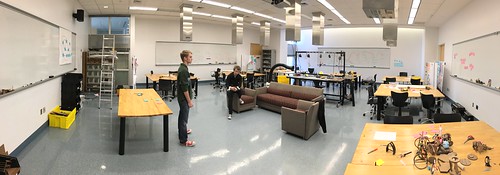

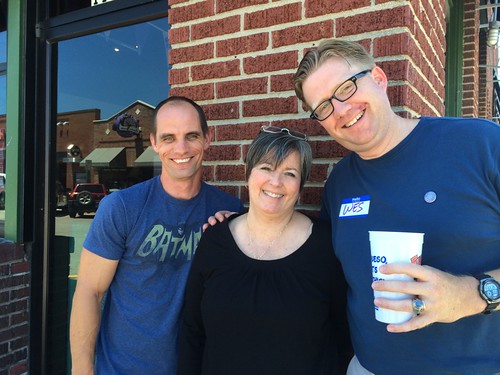
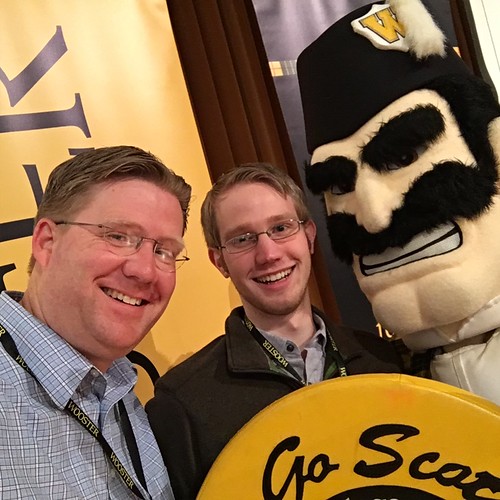
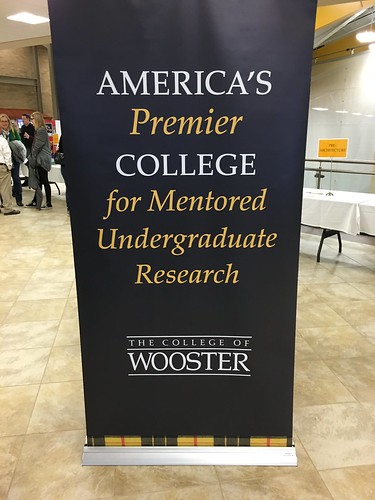
Comments
2 responses to “Lessons Learned on our Family’s College Journey (April 2016)”
Wow Wes. This is the most detailed post like this I think I have ever read. You have certainly done your work and your research! I have a son (strangely, also named Alexander…) who graduates from high school this year as well. We’ve done our research (admittedly far less than yours) and he has his applications in to the places he wants to go. One observation is that this seems like a smaller process North of the border. Cost is still an issue although less than yours. We are projecting approximately $25K / year compared to the 50 that you have mentioned. This includes a place to live and tuition. Since we live in a small town in a remote area my son is going to have to go at least 500 miles from home to attend school. There is nothing close by (as in, no schools at all) where he could attend. Alexander has been applying for scholarships and bursaries as well and with the very good grades that he has, we are hoping he will be able to bring in some money to offset the cost. Scholarships here are generally much smaller than those you have mentioned, $5 – 10K being considered very generous. It’s interesting to compare the experiences in the two nations. Good luck to your Alexander and thanks for sharing.
Thanks so much for chiming in with a comment, Clarence, it is great to hear from you! That is amazing we both have graduating sons named Alexander! 🙂 We should have encouraged our Alex do do more scholarship applications… but it’s not too late and we’re also planning to encourage him to keep applying even after he starts his first year. We did file an appeal for more merit-based aid at the out-of-state college which offered him the most money… we should hear back within a week and a half. Not holding our breath, but there is a chance… Most likely he’ll be staying local. We are going to get a degree plan through our local community college which has a follow-on engineering program (as well as Chemistry or Bio-Chem I’m guessing) to OU, which is where he wants to go if he stays in-state. Not positive but it looks like our costs for that would be $15K per year with scholarships he does have, not taking out loans… And that would be living on campus. Still lots more to negotiate.
I’m so glad for your feedback and to hear you found this post worthwhile… it’s definitely one I thought about writing and mulled over literally for months! Still so much to learn. I hope things go super well for your Alex as he heads to university.
I hope our paths will cross sometime in the not-too-distant future!